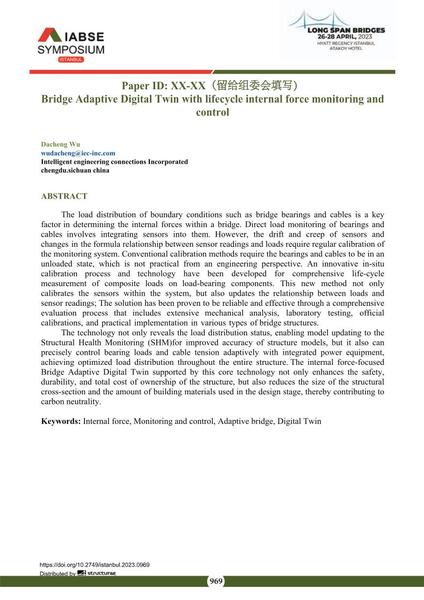|
Abstrakt:
|
The load distribution of boundary conditions such as bridge bearings and cables is a key factor in determining the internal forces within a bridge. Direct load monitoring of bearings and cables involves integrating sensors into them. However, the drift and creep of sensors and changes in the formula relationship between sensor readings and loads require regular calibration of the monitoring system. Conventional calibration methods require the bearings and cables to be in an unloaded state, which is not practical from an engineering perspective. An innovative in-situ calibration process and technology have been developed for comprehensive life-cycle measurement of composite loads on load-bearing components. This new method not only calibrates the sensors within the system, but also updates the relationship between loads and sensor readings; The solution has been proven to be reliable and effective through a comprehensive evaluation process that includes extensive mechanical analysis, laboratory testing, official calibrations, and practical implementation in various types of bridge structures. The technology not only reveals the load distribution status, enabling model updating to the Structural Health Monitoring (SHM)for improved accuracy of structure models, but it also can precisely control bearing loads and cable tension adaptively with integrated power equipment, achieving optimized load distribution throughout the entire structure. The internal force-focused Bridge Adaptive Digital Twin supported by this core technology not only enhances the safety, durability, and total cost of ownership of the structure, but also reduces the size of the structural cross-section and the amount of building materials used in the design stage, thereby contributing to carbon neutrality.
|

